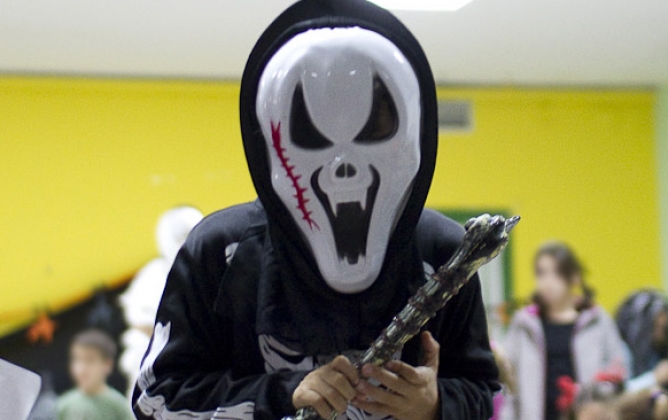Are Halloween Costumes Going Too Far?
Walk down any Halloween costume aisle this week and you’ll probably see a pattern—gruesome or provocative. Oh there might be the occasional fairy princess or cowboy among the costumes. But more and more it seems that even young children’s costumes are increasingly edgier.
This trend went viral last week when someone posted an Instagram photo of a child wearing a Ray Rice costume and dragging a doll. It was apparently meant to depict Janay Palmer-Rice, the then finacee of the former NFL star. She was dragged out of an elevator unconscious after an altercation with Rice. Since then other pictures of people portraying Rice have also surfaced.
Palmer-Rice responded to the Instagram pictures by posting, “It’s sad, that my suffering amuses others.”
A CNN story reports that the Ray Rice costume for kids is the “latest example of what seems to be a trend in wildly inappropriate children’s Halloween costumes.” Among other costumes for kids are meth dealers, a baby cigarette, serial killer Hannibal Lecter, a terrorist and a little Hitler. The New York Daily News reports that Brands on Sale is selling a ‘sexy Ebola nurse’ costume complete with face mask, safety goggles and latex gloves. The company’s chief executive Johnathon Weeks is quoted as saying that controversial costumes are all in the spirit of the holiday—for the shock factor.
University of Northern Iowa’s Phyllis Backer believes that Halloween outfits represent what is going on in society. While girls’ costumes are increasingly sexual, boys’ costumes are often aggressive or violent. Their costumes may feature a “hyper-masculine character that most boys cannot life up to.” Guns, knives and bloody body parts are also often accessories.
Meanwhile a study from the University of Texas found that exposure to sexualized messages can be associated with “body dissatisfaction, disordered eating, low self-esteem and depression among adult women.” While a single night dressed as a French Maid or sexy kitten likely won’t have a life long effect on a young girl, sexy Halloween costumes may be just one more link in a long list of messages our daughters get about the need to be “sexually alluring” to boys.
The study, conducted by Rebecca A. Bigler, found that even 10- to 15 year olds who have higher levels of sexualization invest more of their time trying to look sexy, often to the detriment of other things like academics. Girls ages 11 to 15, who have internalized the importance of being sexually attractive to boys tended to wear tighter and more revealing clothing.
Bigler suggests that parents encourage their girls to use their creativity to make their own costumes and to be open about the costume features that are inappropriate or objectionable.
Finding that line between appropriate and inappropriate costumes can sometimes be challenging for children and adults. Pam Moore who hosts the Whatevs blog gives these guidelines.
“If the costume would be hurtful to a person or a group, it’s not ok. If the costumes makes light of violence, it’s not ok. If the costume sexualizes a pre-pubescent child, it is not ok.”
What makes the cut for Halloween costumes at your house?


